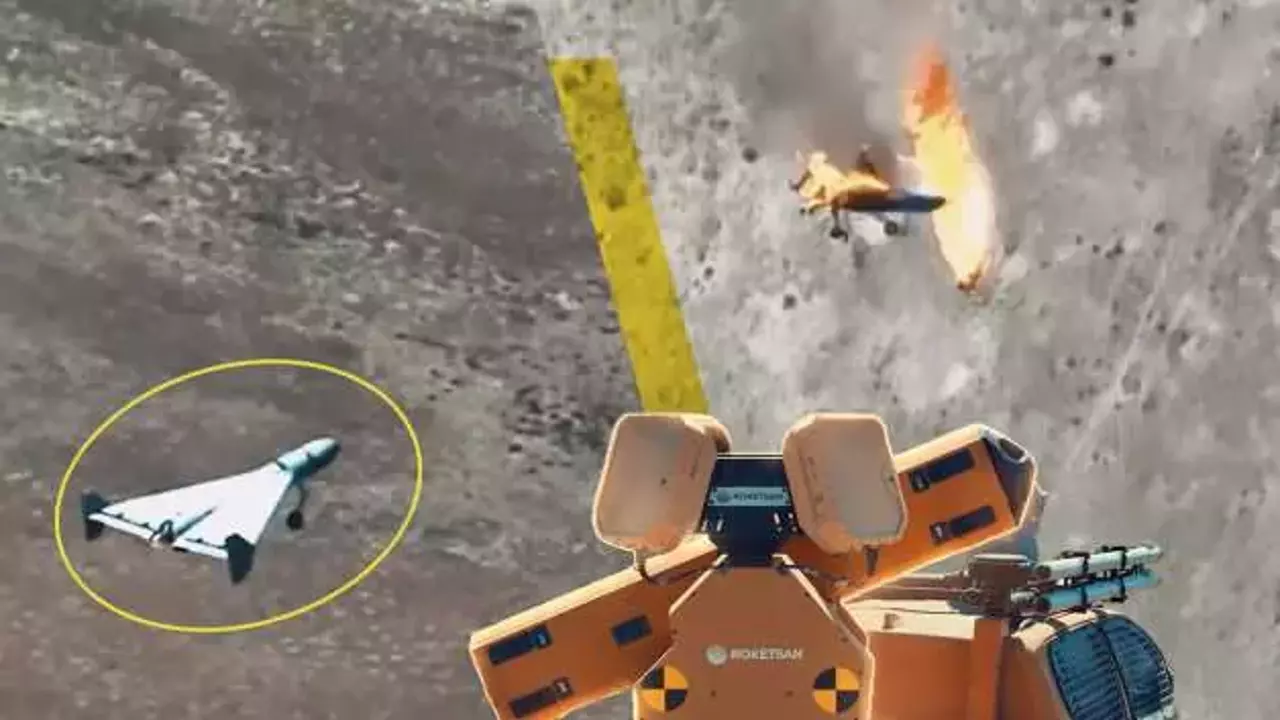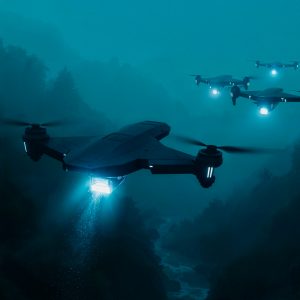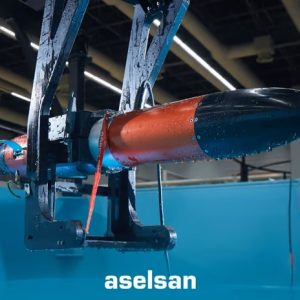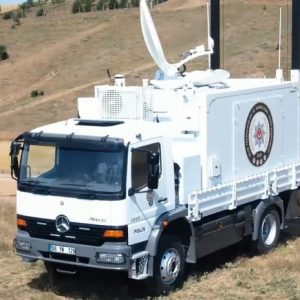The CİRİT laser‑guided missile successfully intercepted a simulated kamikaze UAV when fired from the PUSU mobile weapon system mounted on a pickup truck. This event marks a notable shift toward adapting precision-guided munitions for counter‑UAS roles.
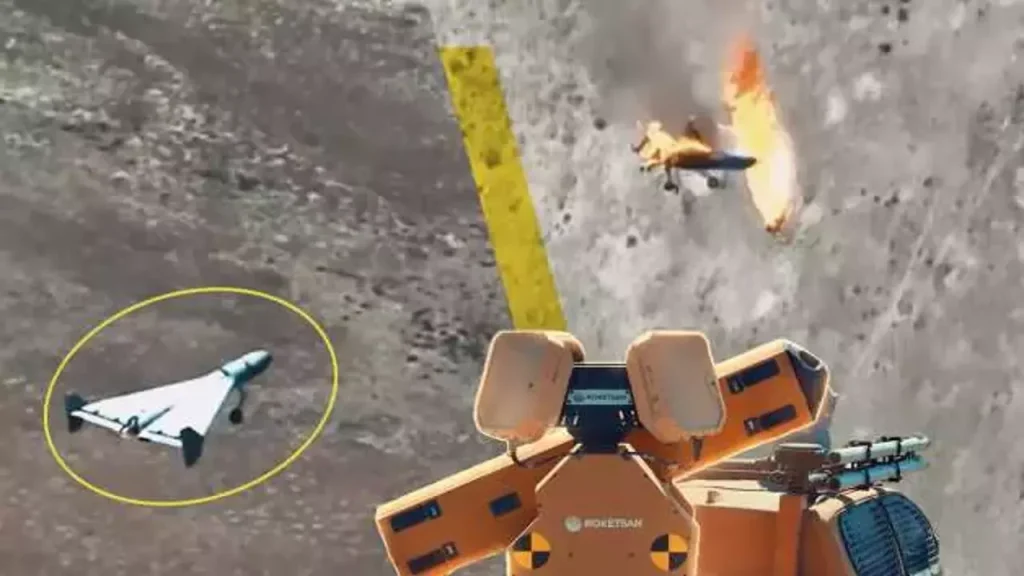
Test Overview: PUSU System Engages UAV Threat
In a live-fire demonstration shared publicly shortly after IDEF25, ROKETSAN showcased the PUSU system—based on a Toyota Hilux pickup—armed with four 70 mm CİRİT missiles. The system engaged a UAV visually similar to the Shaheed‑136/Geran‑2 loitering munition. AESA radar detected the target, while an onboard KARAKURT EO/IR gimbal designated it for laser-guided interception.
The missile reportedly employed a laser proximity fuse to improve interception odds. Although not designed as an air-defence missile, CİRİT’s multipurpose warhead proved sufficient to neutralize fragile UAV threats effectively.
Expanding the C–UAS Role of CİRİT
The demonstration highlights CİRİT’s potential beyond anti‑tank and fire‑support missions. As explained by ROKETSAN, the system fills a tactical gap between unguided rockets and higher-cost guided missiles, capable of engaging targets at ranges up to 8 km with precision.
Other platforms using the KMC launcher—such as the Kaplan STA, T129 ATAK helicopter, and unmanned surface vessels (USVs)—could also field up to eight CİRİT missiles per vehicle, enabling deeper salvo capability for counter‑drone operations.
Comparative Context: Laser Rockets in C‑UAS Applications
The concept of using laser‑guided 70 mm rockets for aerial threats is not novel. In 2019, USAF tested APKWS against cruise-missile surrogate targets using F‑16s and SNIPER pods. Similar approaches—such as Ukraine’s VAMPIRE C‑UAS and US deployments of APKWS II—demonstrated effectiveness against loitering UAVs at manageable cost.
Compared to MANPADS or SPAAGs, laser‑guided systems like CİRİT offer enhanced mobility, affordability, and ease of deployment—critical in asymmetric conflict zones and expeditionary settings.
Technical Insight: Sensor Fusion and Proximity Fuze Use
The integration of AESA radar with EO/IR targeting and potential proximity fuse indicates an integrated multi‑sensor architecture within PUSU. This enables precise target acquisition and terminal detonation without requiring direct impact—a significant advantage with lightweight UAV targets.
Strategic Implications and Future Moves
This test cements a scalable, low-cost C‑UAS solution rooted in domestically produced technology. It aligns with Türkiye’s broader drive to field flexible, modular defence assets leveraging systems like Hisar and Siper for layered air defence. While CİRİT is not a dedicated air-defence missile, its adaptability strengthens mobile counter-UAV capabilities for infantry and mechanised units.
Further trials—particularly integrating CİRİT on armored vehicles, USVs, or helicopters—could validate its role as a complementary layer alongside systems such as HİSAR‑A/O and upcoming SIPER long-range defense platforms.
For a related analysis, see our article on the development of Türkiye’s SIPER air-defence system.
For technical specifications of CİRİT and official manufacturer data, refer to ROKETSAN’s product page on the CİRİT laser-guided missile.
The successful UAV intercept confirms the viability of retrofitting existing tactical missile systems into emerging counter-UAS roles. Türkiye’s CİRİT laser‑guided missile, launched from the mobile PUSU platform, introduces a cost-effective and agile response layer to drone threats. Its adaptability across multiple launch platforms supports evolving battlefield requirements while preserving logistic simplicity.

